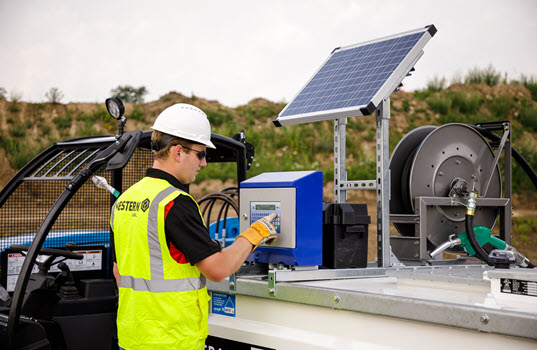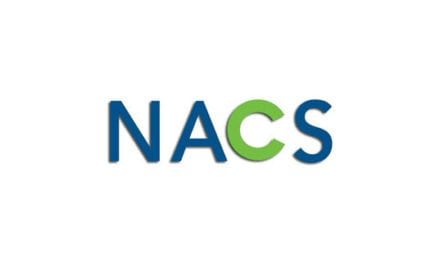By Michael O’Brien, Western Global
Providing solutions to customers is a complex balancing act. On one hand you have internal budgets, strict revenue goals and sales objectives. On the other hand, you have equally important customer relationships to maintain. This delicate balance can be said of just about any industry and is especially evident in fuel distribution and the correlation between wet hosing and onsite bulk fuel tanks.
As customers request wet hosing operations, it’s important to educate them on alternative methods and benefits of bulk fuel storage. Distributors must balance the needs of customers with their own budgets for fleet and personnel. Determining the right service and educating customers can help save on budget and grow profits, all while keeping customers happy.
Challenges of Wet Hosing
Sometimes called wheel-to-wheel fueling, wet hosing can be labor intensive and expensive. Drivers require Hazmat-endorsement and a CDL. The service is often demanded at night when equipment on the site is not working or the trucks won’t be in the way of day-to-day operations, so refueling can take all night. With 50 large fleet customers, wet hosing likely requires 50 separate drivers and trucks, resulting in a considerable amount of overhead and budgeting difficulties. Because of the demands of the job, there’s often a high turnover rate of these drivers.
The potential of missed deliveries poses another challenge with wet hosing. Wet hosing relies on people, consistency and a keen focus on logistics and scheduling – all things prone to mistakes. Underestimating fill times and overscheduling a driver is easy to do, as is accidentally missing a stop on a busy night. Drivers call in sick and equipment breaks down, making the potential for a missed delivery and an unhappy customer even more possible and costly. If a refrigerated truck goes down, it can result in the costly loss of a truck full of product and claims against the distributor. At the very least, such an error could result in a lost contract. So even though wet hosing appears at first glance to be a great way to boost profits with value added service and additional drop fees, a hard look at the numbers and headaches associated quickly indicates some serious evaluation of contracts is necessary.
With new technology and equipment, fuel distributors can capitalize on the applications that truly require wet hosing service while efficiently and effectively serving the majority of their customer base with onsite tanks that allow customers to take responsibility for their own fueling demands.
Determining the Wet Hosing Need
Wet hosing provides a valuable service for fleets in many industries. While the method provides convenient portability for fueling, it’s not always the best choice for every situation. For stationary equipment like reefer trailers or generators, wet hosing may seem like the only option, but a contractor-employed service truck equipped with a trailer-mounted tank easily fulfills the mission for those willing to invest in drivers, tank technology and certifications. Success depends on finding a tank that can be easily and safely transported full. Square tanks with the proper licensing can be transported full and are conveniently trailer mounted. This allows for crews to do their own wheel-to-wheel fueling, which offers the best of both worlds. Fuel is always available, and usage can be monitored. Assisting customers in making this decision requires a keen attention to their needs, the right tank offering and an ability to help them work through the added profit potential of buying fuel in bulk and controlling their own supply.
Wet hosing often offers the preferred option for customers in cities and jurisdictions with rigid regulations regarding above-ground fuel tanks. In these instances, the number of tanks available to meet the strict codes are very limited and wet hosing is often the most practical solution. While convenient for the customer, wet hosing presents an array of challenges for the fuel distributor. By integrating an onsite tank and wet hosing strategy – reserving wet hosing for those applications that strictly demand it – fuel distributors can best utilize their resources and efficiently service all customer needs.
Many customers look to wet hosing as a solution for theft prevention, accurate fuel tracking and budget forecasting. Because the distributor always maintains control of the fuel, the chances of theft are virtually eliminated, and fleet managers receive a detailed report of how much fuel went into each piece of equipment with each fuel drop. This allows for easily forecasting future fuel usage.
While the technology exists to control theft and track fuel usage with onsite storage tanks, few manufacturers offer an integrated and comprehensive solution.
Knowing the technology exists and finding the right manufacturer to partner with substantially increases confidence in selling alternative onsite methods to customers. Integrated onsite systems offer technology that locks the tank to any user without a card key to unlock the dispense controls, preventing unauthorized use or theft. In addition, since each card key is unique, the system determines which driver is taking fuel, along with refueling frequency and amount of fuel used. This remote monitoring capability aids in tracking how and where fuel is used and forecasting consumption and costs for the life of the job. These systems allow operators to track inventory levels and tank location at any time, helping them take control of fuel supply and avoid downtime associated with a depleted fuel inventory. Offering the comprehensive tank package for customers can reduce the required wet hosing contracts and assist in controlling costs and personnel demands.
Often, fuel distributors approach the tank as a free product, making the profit in the distribution of fuel. While this system may have been adequate for round tanks, new technology and the development of cube fuel tanks has led to another revenue stream for innovative fuel distributors. Many distributors who recognize the value of the advanced technology and design, now provide the more advanced tank systems with no immediate cost but rather a fuel surcharge amounting to anywhere from one to three cents per gallon. This billing structure provides a revenue stream that outlives the initial price of the tank.
Benefits of Selling Onsite Bulk Fuel
While onsite storage can offer most — if not all — of the benefits of wet hosing, perhaps the greatest draw is the opportunity for the customer to independently fuel a fleet. Customers always have fuel and full control over their supply, along with the ability to adjust as the demands of their site fluctuate. The opportunity to purchase at a bulk rate and have a steady supply can often offset their determination to secure a wet hosing contract. Once they experience the security and freedom of controlling their supply, their loyalty to the solution partner often grows. Relinquishing some of the control of day-to-day fueling gives distributors better control over their own staffing needs and scheduling.
Helping Customers Decide
The greatest thing a distributor can do for their customer is ask questions and become a true partner in the situation. Ask customers if they have the internal infrastructure to perform their own fueling onsite. Since there are regulations and licensing required to hold fuel onsite, bulk storage is sometimes not an option for everyone. Some customers may not be willing to take on the liability or insurance fees associated with bulk storage. For them, wet hosing will be the best option. The key to finding the best solution and long-term loyalty is finding a solution to all the customers’ pain points. In some instances, that solution may be wet hosing, but in others, the solution is education. As understanding of the capabilities of onsite fuel storage minimize the demand for wet hosing to those specific instances, distributors will be able to adequately balance their own budgets with customer satisfaction.
 Michael O’Brien, Regional Sales Manager—South Central U.S., Fuel Channel at Western Global. Western Global is an international designer and manufacturer of industry-leading tanks and equipment for fuel and fluid handling. Building on a legacy that spans five decades, Western Global offers a wide range of solutions for the safe transportation and storage of fuel, diesel exhaust fluid, lubricants and more. Because every application is unique in its operational storage needs, Western Global engineers industry-specific solutions to ensure success in all of your business endeavors. Learn more at www.western-global.com or connect on social media.
Michael O’Brien, Regional Sales Manager—South Central U.S., Fuel Channel at Western Global. Western Global is an international designer and manufacturer of industry-leading tanks and equipment for fuel and fluid handling. Building on a legacy that spans five decades, Western Global offers a wide range of solutions for the safe transportation and storage of fuel, diesel exhaust fluid, lubricants and more. Because every application is unique in its operational storage needs, Western Global engineers industry-specific solutions to ensure success in all of your business endeavors. Learn more at www.western-global.com or connect on social media.










